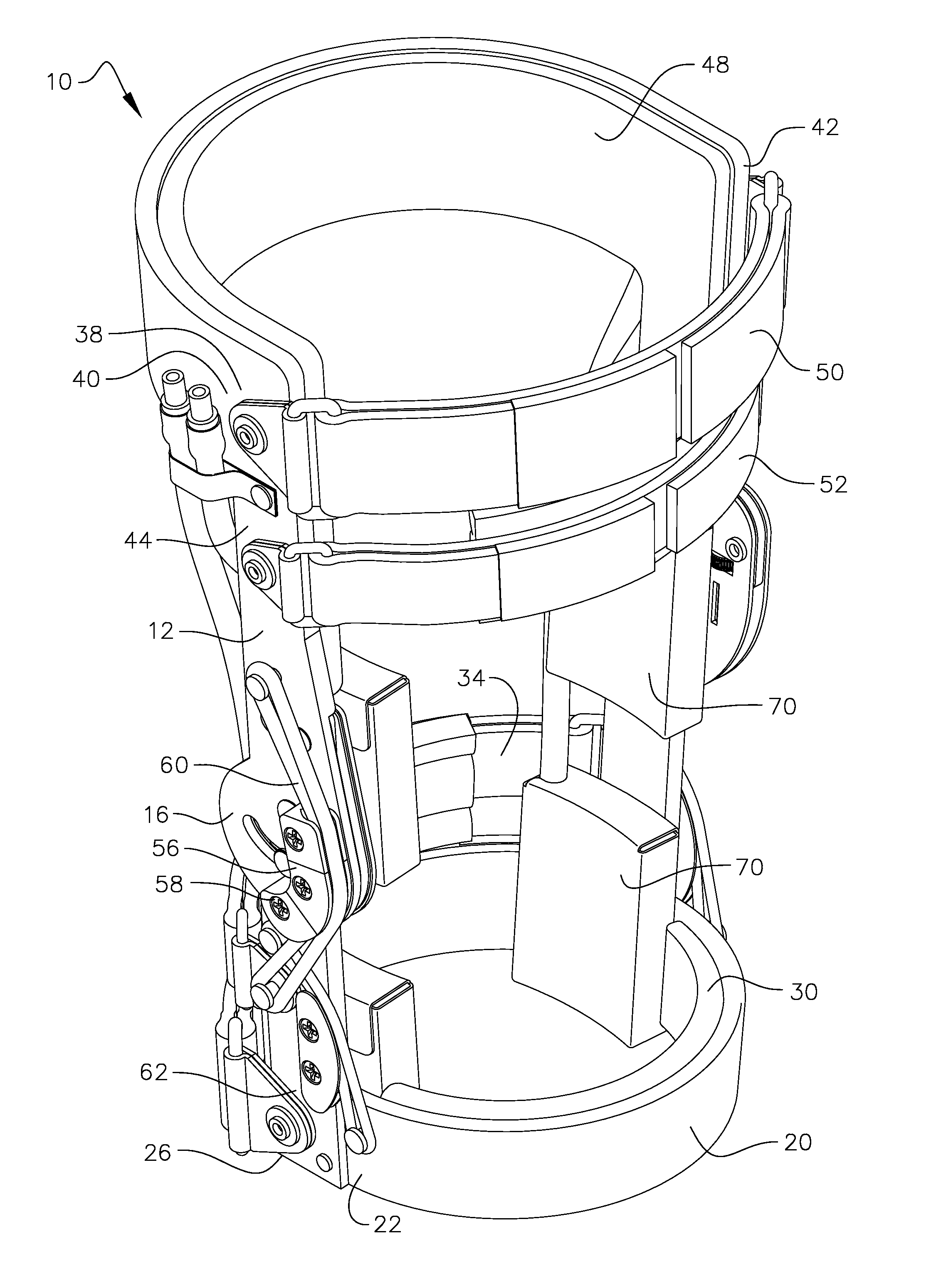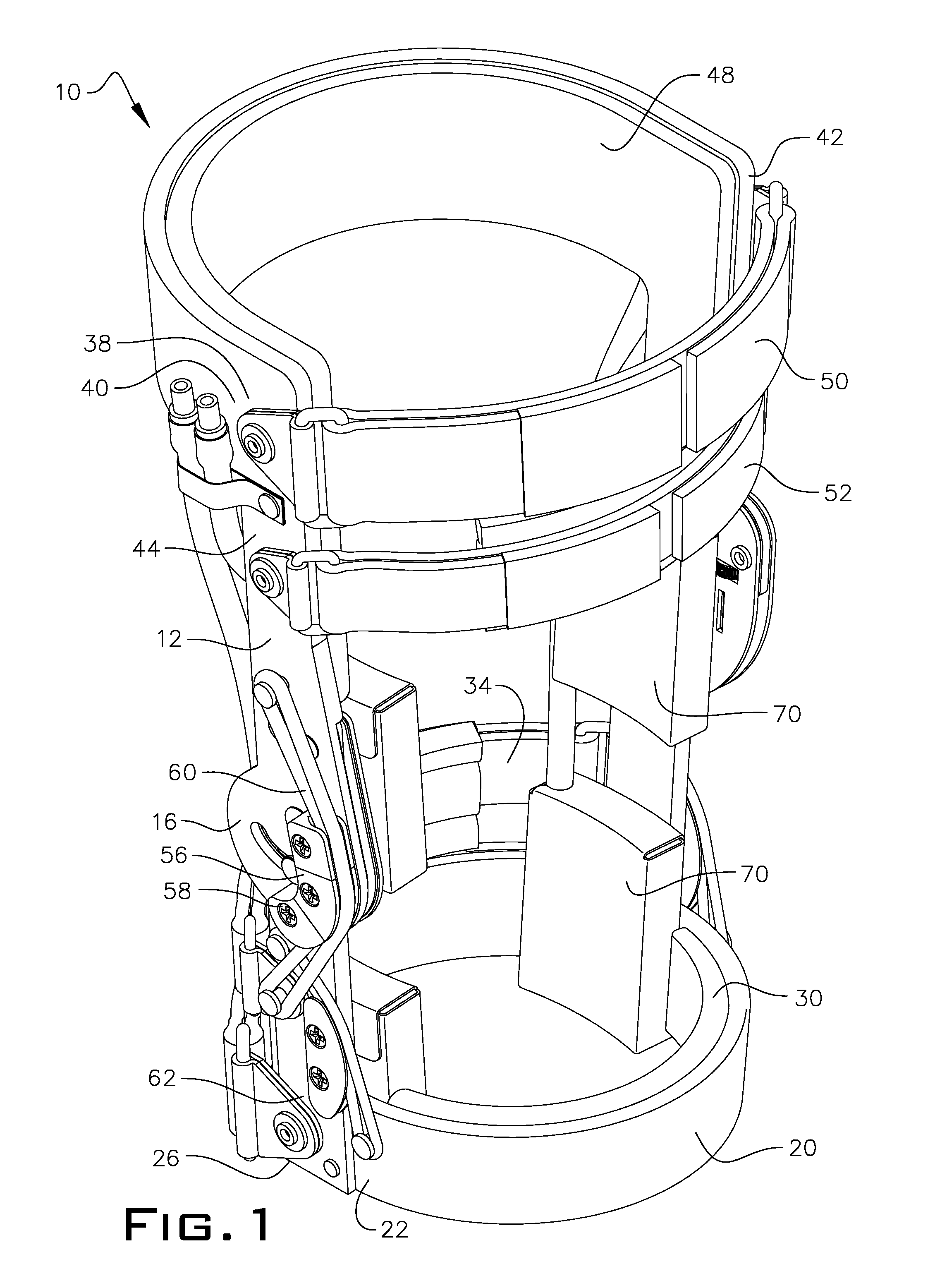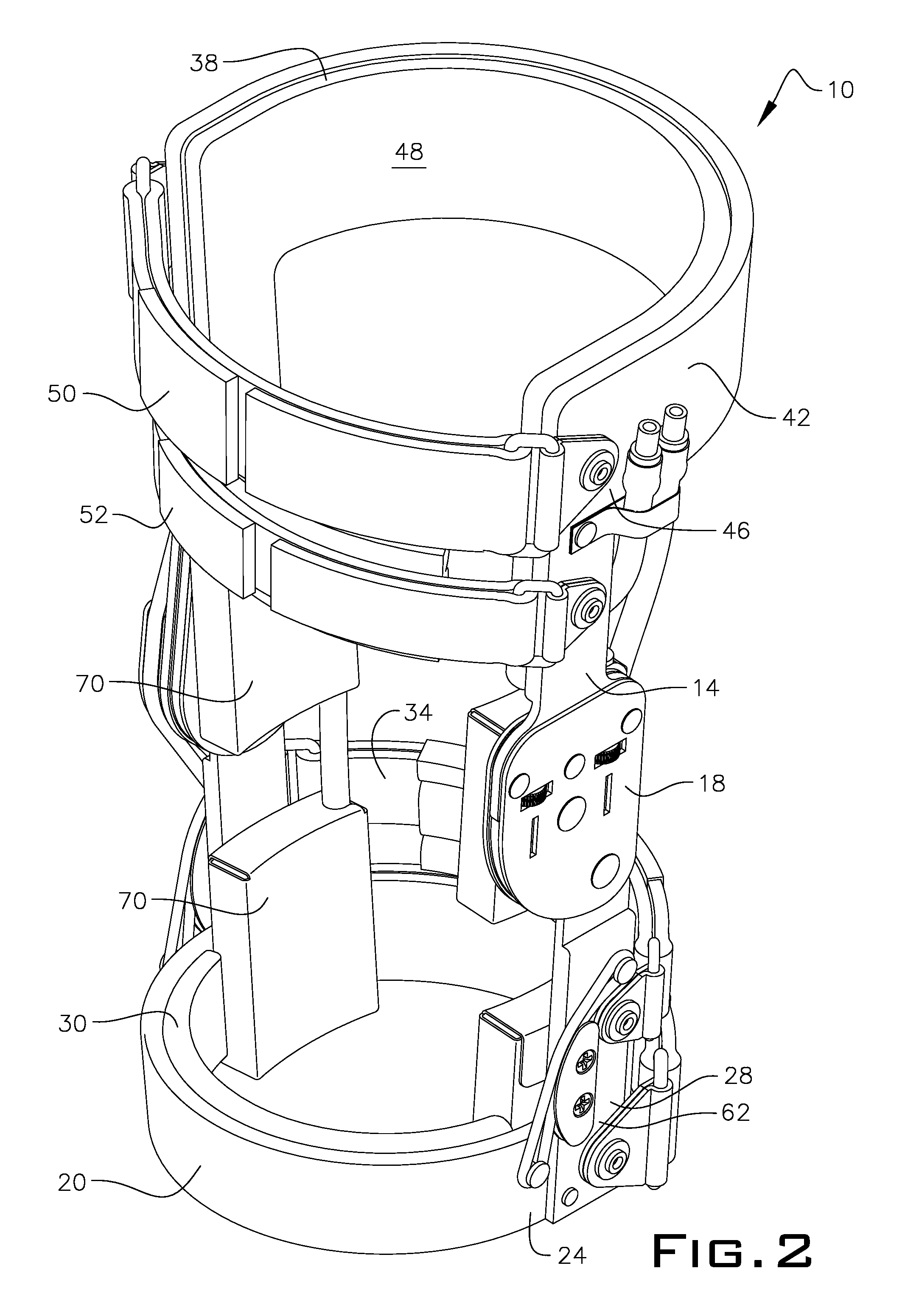Knee orthosis with hinged shin and thigh cuff
a knee and hinge technology, applied in the field of knee orthosis, can solve the problems of reducing body energy, reducing the effect of muscle atrophicity, and reducing the stability of the knee, so as to reduce or eliminate unwanted pressure, prevent the slippage of the brace, and add stability to the knee
- Summary
- Abstract
- Description
- Claims
- Application Information
AI Technical Summary
Benefits of technology
Problems solved by technology
Method used
Image
Examples
Embodiment Construction
[0025]Throughout the following detailed description the same reference numerals refer to the same elements in all figures.
[0026]Referring to FIGS. 1 and 2, a knee orthosis 10 of the present is shown. As shown, knee orthosis 10 has a left side and right side vertical strut, 12 and 14, respectively. Struts 12 and 14 are generally parallel and when knee orthosis 10 is employed on a patient run along medial and lateral sides of a knee joint and thigh and shin area of the patient. Each strut has its own hinge 16 and 18 positioned intermediate top and bottom portions of struts 12 and 14 such that knee orthosis 10 pivots about said hinges when the knee joint of the patient is flexed. In the embodiment shown in FIGS. 1 and 2, hinge 16 is a polycentric hinge and hinge 18 is a uni-centric hinge. However, nothing herein limits the use of knee orthosis to this embodiment shown and described herein in this preferred embodiment. In fact, any combination of hinges could be employed.
[0027]Referring...
PUM
 Login to View More
Login to View More Abstract
Description
Claims
Application Information
 Login to View More
Login to View More - R&D
- Intellectual Property
- Life Sciences
- Materials
- Tech Scout
- Unparalleled Data Quality
- Higher Quality Content
- 60% Fewer Hallucinations
Browse by: Latest US Patents, China's latest patents, Technical Efficacy Thesaurus, Application Domain, Technology Topic, Popular Technical Reports.
© 2025 PatSnap. All rights reserved.Legal|Privacy policy|Modern Slavery Act Transparency Statement|Sitemap|About US| Contact US: help@patsnap.com



